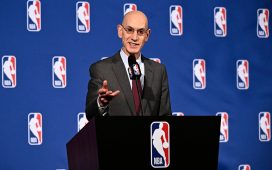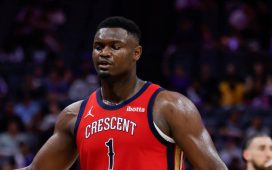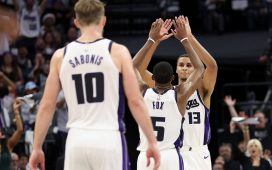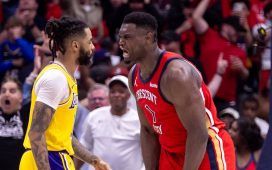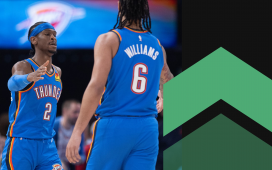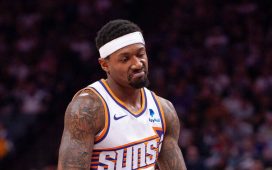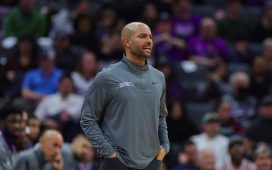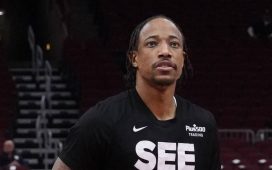The New York Times is reflecting on the past decade in the N.B.A., which has evolved perhaps more than any other major sports league.
The N.B.A. has been less bound to tradition than the other major sports leagues, embracing uniforms changes more so than the N.F.L. and embracing rules changes more readily than the M.L.B.
But the core of the N.B.A. — its strategy, culture and narrative — has been upended in significant ways, both by choice and by urgency, over the past decade. (Remember what free agency was like before “The Decision”?)
Our writers’ task was to pick what changed everything for the N.B.A. at its core over the past decade, be it a moment, a theme or a trend.
Victor Mather
Senior staff editor and reporter
The 76ers decided that the way to win in the N.B.A. was to lose, and lose a lot. Their scheme, dubbed “The Process,” involved making little or no effort to improve the team, losing a lot of games (63, 64 and 72 in consecutive years) and getting great draft picks. The architect of The Process, Sam Hinkie, was eventually fired, but it sort of worked. The 76ers took Joel Embiid with a No. 3 pick and Ben Simmons with a No. 1. It also sort of didn’t work. No. 1 overall picks Jahlil Okafor and Markelle Fultz did not turn into stars.
But in a big way, The Process really didn’t work. Even if Embiid and Simmons someday lead the 76ers to glory, those tanking seasons are lost forever, and the fans forced to sit through a 10-72 season in 2015-16 will always have the dismaying memories of a team that often played hard on the court but was continually undercut by an intentionally woeful performance by its front office.
Did The Process change everything? Let’s hope not.
Marc Stein
Hall of Fame sports reporter
The N.B.A. Players Association’s stubborn refusal to allow the league to institute “smoothing” — a gradual salary-cap increase starting in 2016-17 season instead of a nearly $25 million jump — paved the way for the Warriors to sign Durant away from Oklahoma City. Golden State’s failure to win the championship in 2016 after taking a 3-1 series over lead over Cleveland was another huge factor, since Durant almost certainly would not have chosen to join the Warriors if they were two-time reigning champions. But the cap spike is what made it mathematically possible for the Warriors to afford to sign Durant even with Stephen Curry, Klay Thompson and Draymond Green already on the roster. There was no stopping the Warriors from becoming a dynasty once Durant joined them.
Benjamin Hoffman
Senior staff editor
It is hard to imagine what the decade would have looked like had LeBron James not signed with Miami before the 2010-11 season. The concept of a Big Three was hardly new — just ask Wilt Chamberlain, Jerry West and Elgin Baylor — but the teaming up of friendly rivals broke with a tradition in a way that many people found unsettling.
Players, however, seemed to like the idea. With James absorbing much of the criticism, the transactions column was suddenly dominated by players forcing their ways into better situations for themselves, creating would-be superteams.
The concept was taken to a new extreme when Kevin Durant signed with a 73-win Warriors team in 2016, and it continued in this past off-season when James’s Lakers traded for Anthony Davis and Durant teamed up with Kyrie Irving on the Nets. Some fans may not like the superteam era, but it does not appear to be going anywhere.
The Culture
Kevin Draper
Sports business reporter
For years the N.B.A. tolerated Donald Sterling’s persistent racism. But in 2014, after TMZ unearthed audio of him uttering racist remarks, Adam Silver decided it had been long enough and barred him from the league for life. Coming just months after he had replaced David Stern as commissioner, the ban signaled Silver’s independence and garnered him immense respect from the league’s largely black player base.
It turbocharged a decade of player activism that had seen Heat players wear hoodies after the shooting death of Trayvon Martin. Players spoke out on issues of national debate, like the killings of unarmed black men and women by police officers, and teams engaged with movements like Black Lives Matter. The head coaches Steve Kerr and Gregg Popovich regularly condemned gun violence and President Trump.
As the decade drew to a close, the era of league activism crashed into the shores of China, where Daryl Morey’s tweet of tepid support for Hong Kong protesters had prompted backlash while the Rockets’ owner, the league and prominent players worked furiously to distance themselves from the situation. The Chinese buy shoes too, after all.
Shauntel Lowe
N.B.A. editor
It has to be The Decision. LeBron James showed just how powerful a superstar could be — and a black superstar, at that. Black athletes dominate the N.B.A., and here was one of them making clear that he would control how his talent would be used and to what — or to whose — benefit.
The backlash to The Decision and James’s subsequent financial power plays revealed a lot of racism — overt and coded — among fans and executives and called into question the white boss-black athlete power dynamic pervasive in much of sports. The power to decide who plays where and for how much and when has long been almost exclusively in the hands of white men. James, in the vein of Curt Flood, became an example of how black players could also dictate those choices.
James not only showed other black athletes just how much power they have but also helped everyday black people feel more comfortable leveraging their own talents, too.
The Story
Harvey Araton
Hall of Fame sportswriter
Just when Andre Iguodala was about to lay the nail in the Cleveland Cavaliers’ coffin in Game 7 of the 2016 finals, here came LeBron James with the chase down of all chase downs, blocking the shot and setting up what will likely be remembered as the most important moment of Kyrie Irving’s career.
Yes, the foolishness of Draymond Green, who was suspended for Game 5, provided vital assistance to James and company in wiping out a 3-1 deficit and erasing 52 years of sports frustration in Cleveland. But James forever rewrote his personal narrative and cemented his legacy in northeast Ohio and beyond as the man who betrayed Cleveland (2010), came home (2014) and conquered (2016).
Scott Cacciola
Sports reporter
He was not yet a Most Valuable Player Award winner — or even an All-Star. But when Stephen Curry showed up at Madison Square Garden on Feb. 27, 2013, fans were beginning to see the future. It was a future full of intergalactic 3-pointers and must-see TV live from the West Coast. And then he put on an unforgettable show, scoring a career-high 54 points while shooting 11 of 13 from 3-point range in a narrow loss to the Knicks.
At the time, the Warriors were still two years from assembling their first championship run. But Curry was a new-age star, a savvy point guard who could dribble and pass and shoot — and do all those things with artistic flair. He was creative and imaginative, and no one had seen anyone quite like him. Now, the next generation wants to be just like him.
